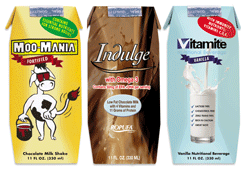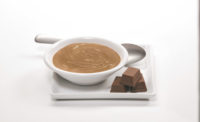
Source: Danisco
But as we know, grab-and-go bars and shakes have replaced the sit-down bowl of cereal and milk. Traditional square-bread sandwiches have fierce competition with subs, wraps and Panini. Even the morning glass of O.J. has been replaced by many with a smoothie or some protein beverage.
This has many nutrition authorities alarmed, as studies show that micronutrient malnutrition has increased greatly during the past decade. And contrary to what many have previously believed, micronutrient malnutrition is not uniquely the concern of third-world countries. In fact, though micronutrient deficiencies are certainly more common among the poor, deficiencies can be found right here in the U.S. - in big cities, suburbia and rural America. Many believe this is the result of increased consumption of highly processed, calorically dense, micronutrient-poor foods.
One nutrient that continues to make headlines regarding its positive impact on health and wellness - and because it seems to be severely lacking in many Americans’ diets - is vitamin D, also known as the sunshine vitamin. Most milk processors have voluntarily fortified fluid milk with vitamin D in response to a milk fortification program that was implemented back in the 1930s to combat rickets, a bone-debilitating disease that at the time was a major public health problem. It worked, and for many years. But we don’t drink as much milk as we use to, so the food industry should be looking at alternative delivery vehicles.

Source: DSM Nutritional Products
And in September, the Vitamin D Council, a nonprofit educational corporation based in San Luis Obispo, Calif., launched a “Vitamin D and Cancer” campaign, presenting 20 detailed summaries of the evidence on the role of vitamin D in preventing cancer. The summaries can be found on the organization’s website (www.vitamindcouncil.org.) The Vitamin D Council hopes the campaign will spread more awareness about the importance of vitamin D sufficiency and the dangers of vitamin D deficiency.
Very few foods naturally containing vitamin D, a fat-soluble vitamin that when present in food, is found in the lipid component. For example, the best sources of natural vitamin D are the flesh of fatty fish such as salmon and tuna and fish liver oils. Small amounts can be found in beef liver, cheese and egg yolks. Further, because of increased use of sun screen, which prevents the human body from producing vitamin D using the sun’s ultraviolet B band, we are in the midst of a vitamin D deficiency epidemic.

Source: Vitiva
Dairy foods formulators are uniquely positioned to add vitamin D to products beyond fluid milk, because, for one, the vitamin D and dairy connection resonates with consumers, and two, the inherent fat component of dairy makes it an excellent carrier for this fat-soluble vitamin. According to current fortification regulations, vitamin D fortification is permissible in all dairy products except ice cream and other frozen desserts.
So, please add some D. It’s relatively easy to do. Most consumers recognize the value and would likely not have a problem paying a few more cents for the extra nutrition.


